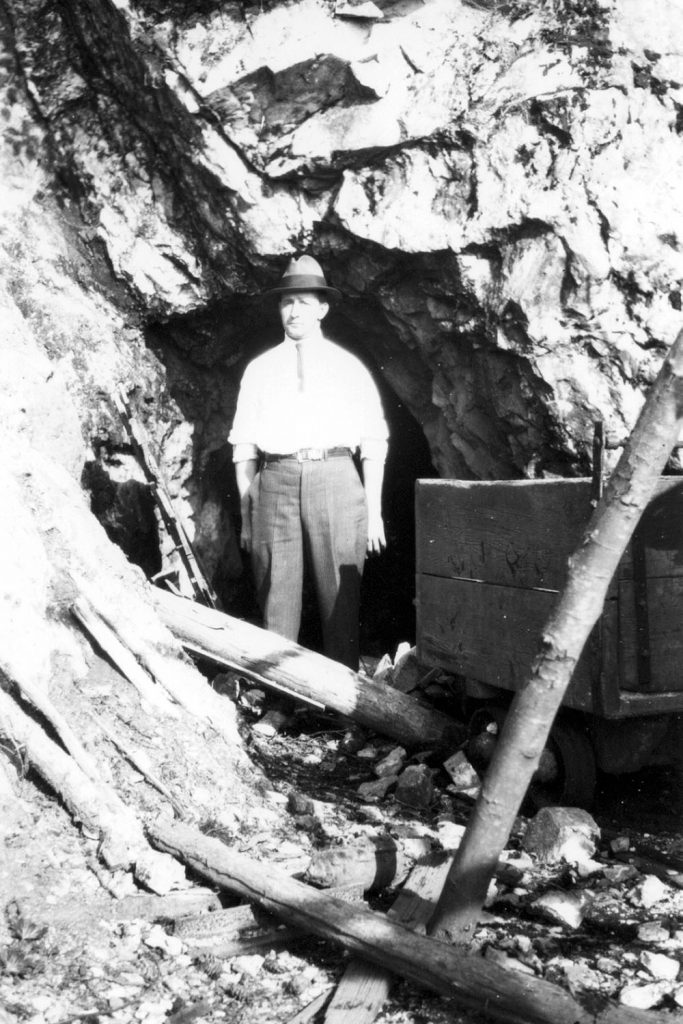This tale should come with a warning – do not be lured by the greed for gold to go in search of a tent-shaped rock in the wilderness behind Golden Ears mountains. Don Merkley and four companions went on such a venture in 1936, endured hardships and came back empty handed, but others have gone to the same area and never been heard of again.

It began in the summer of 1936, when Don Merkley was aged 16. The overcrowding at MacLean High School meant his class was housed in the old Maple Ridge Elementary School on the corner of Laity Street and River Road, near a little grocery store run by the Wilkinsons across River Road from St. John the Divine Church. Hooky-playing Don heard Les Wilkinson’s story of buried gold nuggets from a fabulously rich mine, a story supposedly told by the prospector who broke a leg after burying his cache behind a large tent-shaped rock.
Don persuaded his brother Harold, Bill and Bob Franklin and Jack Laity to listen to the stories and come along on the expedition, set for the last week of August. Wilkinson’s store grubstaked the group, for $30 worth of groceries. The boys, who regularly hiked in the area already, set off to rent a boat on Alouette Lake from the Dickinson family, who looked after the dam at the south end. They rowed the 12- foot hand-built craft up the lake to the float house, one of the few remaining buildings left by the Alouette & Lougheed Company logging enterprise of the 1920s.
The batch of pancakes cooked on a cranky stove from the mix in a five-pound cloth sack turned out as hard as leather, so the boys hurled them into the lake, then cooked up a big pot of porridge. They spotted some snow further up the mountain at sunset, so they raced uphill to fill a knapsack with snow. This they brought down, mixed it with powdered milk and sugar for dessert – ice cream!
Their real troubles began the next day. After an unwise attempt to climb into the intake tunnel to the Stave Lake power dam, and the equally unsuccessful attempt to cross the greasy logs floating inside boom-sticks, they found a second camping place. Supper was more appetizing that night, pea soup, bannock with strawberry jam, and coffee. They bedded down on a tarp covering bent-over salmonberry bushes, only to be awakened soaking wet from an overnight rainstorm. Don’s “helter-skelter shelter” built by firelight covered them, but they soon found that all the food in cloth sacks was ruined.
The prospecting trip came to a sudden end when Bill Franklin’s previously untended foot wound became infected, with high fever, swelling, a red line up his leg and lumps forming at his knee and armpit. They made him a crutch, cooked up hot poultices to draw the poison, and set out for home. Bill made it to Allco Infirmary, where a first-aid attendant lanced the wound.
Home looked pretty good to the intrepid but empty handed explorers. As Don reports, Les Wilkinson didn’t seem very interested in the results of their search. “It was then we realized that he had lost interest the day we’d paid the bill for the grubstake.”
Today’s photograph is of druggist George Campbell, pictured outside a mine tunnel mouth above Pitt Lake, with an ore car on tracks. He and many others have been fascinated by the still unsolved mystery of Slumach’s gold. People who want to read Don Merkley’s full story may find it at the Maple Ridge Museum.
Sheila Nickols, published in the Maple Ridge-Pitt Meadows NEWS Jan 14, 2004